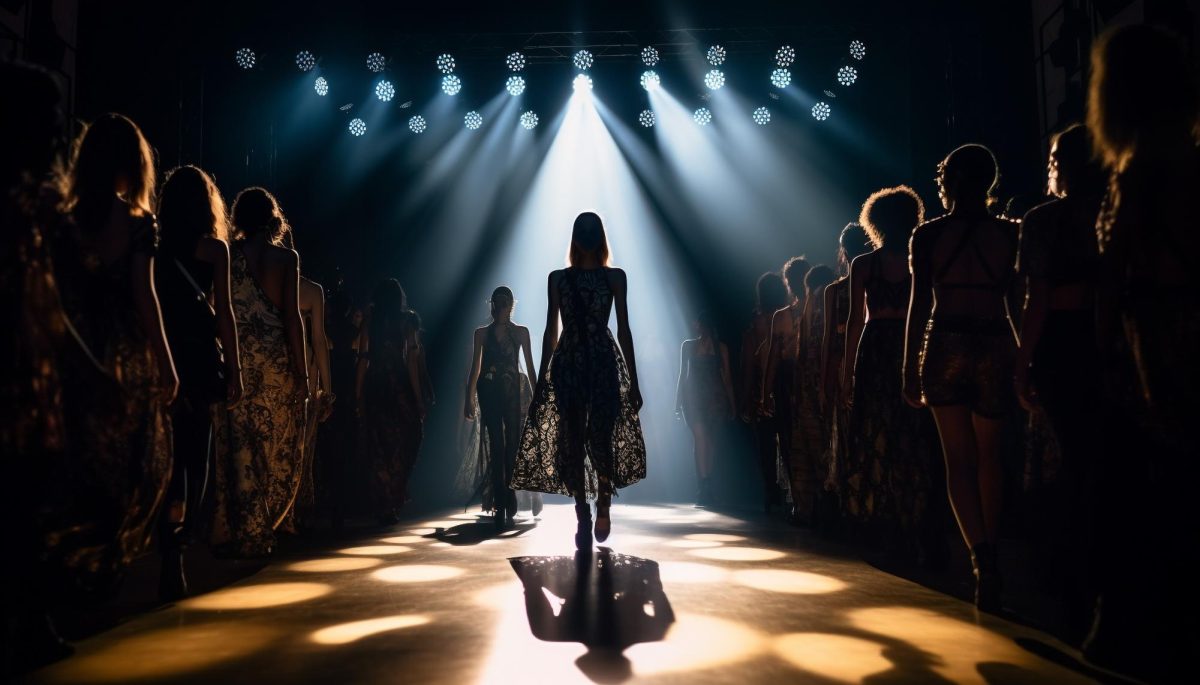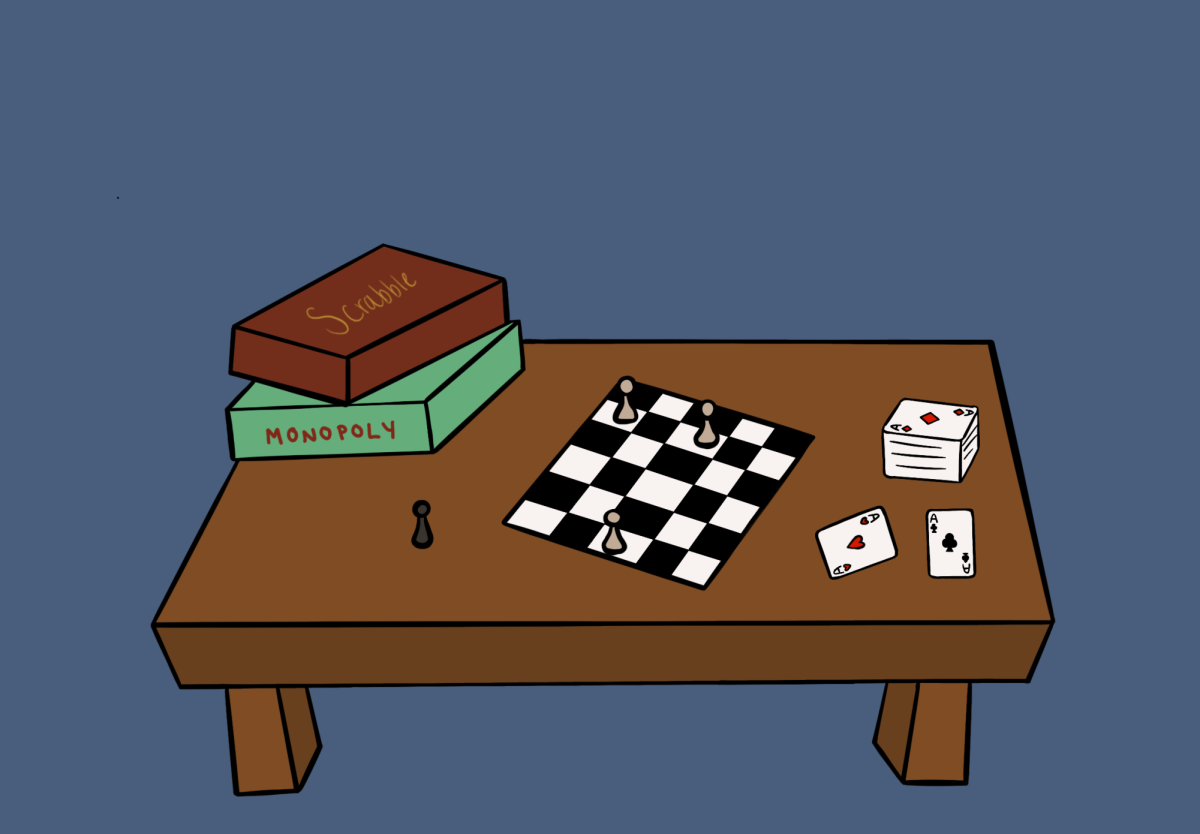A young woman glares in frustration at the mountain of clothes tossed haphazardly onto her bed. After 30 minutes, she still cannot find the perfect outfit for her interview — something reputable and professional but expressive. She ends up in a black tailored suit, paired with her favorite comfortable deep red shoes and family heirloom jewelry that brings her comfort. She takes a final look in the mirror, automatically standing taller, and walks out the door.
With constantly changing trends, commercialization and the rapidly growing fast fashion industry, many don’t see fashion as a serious form of art and expression. Some argue that clothing is just an everyday functional need instead of a creative outlet for artistry. Even though the rapidly adapting industry has taken a more capitalistic approach, it always is an art form. Just because an item of clothing holds a functional purpose doesn’t invalidate its potential to serve as a creative and symbolic medium. Fashion is multifaceted and should reflect the perspective and interests of those designing and wearing the pieces.
Fashion is a form of self-expression; the mannequin or human body is a blank canvas for people to convey what they want the world to see. Clothing choice is a powerful means of communication that reflects the wearer’s personality, mood and intentions. In a society where first impressions matter, fashion is the first look into one’s identity.
Style can speak volumes about an individual, as it expresses personal interests, political ideologies and cultural values. People naturally gravitate towards those with a similar style, just as they are attracted to others with similar beliefs and personalities.
“As I search for a college roommate, I tend to gravitate towards people who have similar styles to me,” senior Elizabeth Kreindler said. “I assume that if we have similar styles we probably have similar interests.”
Fashion subcultures — genres of styles that enable individuals to express their identity, challenge societal norms and create communities centered around shared interests — are the most popular form of fashion connectivity.
Curating outfits that represent one’s style boosts confidence and comfort, while wearing clothing that doesn’t align with one’s preferences can cause feelings of insecurity. Fashion allows people to project or amplify certain personal traits that are signature to the individual, enhancing self-worth.
Juliana McDonald, a Whitman alum and member of the Fashion and Design Society at Syracuse University, expresses her feelings surrounding her outfit choices.
“What I wear has a big effect on my mood because it shows off who I am,” McDonald said. “It shows half of my personality before someone meets me — if I’m not wearing a good outfit I feel strange and unlike myself.”
The manipulation of fashion to evoke emotions and messages has been seen everywhere, from civilians to celebrities to politicians — a trend dating back hundreds of years. During the Middle Ages, strict laws prevented commoners from dressing above their class, highlighting the importance of clothing in signaling background and wealth. Similarly, during the French Revolution, individuals displayed their political allegiances by wearing cockades, showing their support for specific political parties or factions.
In the fight for equal rights, women shifted away from restrictive garments like tight corsets and long skirts, opting for more practical, comfortable clothing. Aside from practicality and comfort, changes in women’s fashion displayed the rejection of typical gender roles and the push for equality.
During the Civil Rights movement, the Black Panthers — an African American revolutionary party founded in 1966 — adopted an unofficial uniform of leather jackets, a visual marker of affiliation with the movement. The jackets were often carriers of pins bearing political messages.
It isn’t just civilians who use fashion as a tool for self-expression; politicians use clothing strategically to evoke specific moods or attitudes in their audiences. During the 2016 presidential election, Hillary Clinton pivoted from dresses to pantsuits to break from her original role as the First Lady. She wore bright colors like pink and yellow to stand out in front of other politicians and display confidence. Recently, political fashion has become more literal, like when Alexandria Ocasio-Cortez wore a dress with “tax the rich” written on it to the 2021 Met Gala.
The Met Gala has become a hub for celebrities using their platforms to portray their beliefs and bring light to certain issues. That same year, Cara Delevingne wore a corset with “Peg The Patriarchy” written across the front, and US soccer star Megan Rapinoe carried a sign that read “In Gay We Trust.” The Met Gala is arguably the world’s biggest fashion event — with Vogue’s social channels garnering 114 million engagements — so celebrities take the opportunity to encourage change through their outfits.
Beyond the Met Gala, celebrities have used many forms of media to circulate political messages, including planned paparazzi shoots, award shows and social media posts.
From the Middle Ages to today, fashion is a multifaceted form of communication connecting individuals. Junior Sky Morgan has a strong appreciation for fashion because of its effect on the person wearing it and those around them, she said.
“Fashion is the strongest form of self-expression,” Morgan said. “When picking an outfit I think about how I can express myself and other people view that expression of myself.”


















Lisa Marie • Jun 19, 2024 at 4:00 am
What a well-written article. I am shocked that this comes from a high school platform and is far more insightful, thoughtful and well-researched than many stories on major “news” platforms. Loved this especially… “Even though the rapidly adapting industry has taken a more capitalistic approach, it always is an art form. Just because an item of clothing holds a functional purpose doesn’t invalidate its potential to serve as a creative and symbolic medium…. Clothing choice is a powerful means of communication…” Great job, Katelyn!